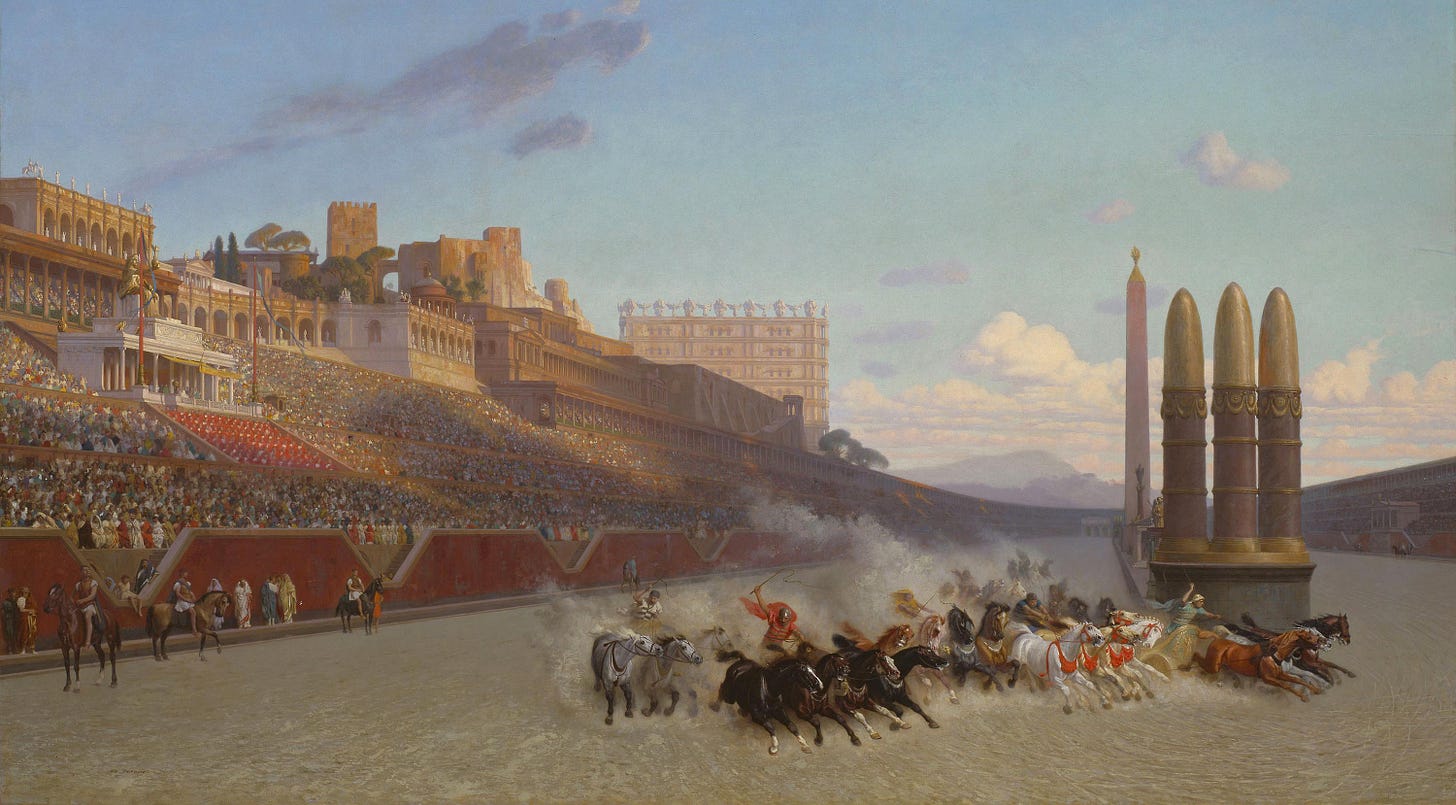Hadrian's Guide to Securing Your Legacy
The two key decisions the emperor took to secure the Golden Age of Imperial Rome...
1,887 years ago today, on the 10th July AD 138, one of the most enigmatic of all Roman emperors died peacefully at his villa, on the idyllic shores of the Bay of Naples.
Hadrian occupies a curious space in the history of the Caesars. His legacy, after all, has been torn between admiration and scandal alike ever since his own lifetime. Yet not nearly enough attention, or credit, has been given to two crucial decisions that he took — one at the beginning of his reign, the other at its end — which paved the way for the golden age of Imperial Rome.
Soldierly and hardy, yet also artistic and romantic, Hadrian was one of the first Roman emperors to be born outside of Italy. He was also one of the most learned emperors, and by far the most well-travelled. As a ruler, he reaped the fruits of success. As a husband, he suffered the consequences of a disastrous marriage. Yet Hadrian rose above this to become a model of long-term thinking.
Today, we explore is how Hadrian overcame family failures to secure his empire, and what his example can teach you about securing your own legacy…
The Oriental Succession
The 1st century AD ended amid the greatest of tension in Rome. Under the competent Domitian, the Empire had known broad peace, sound stewardship and resulting prosperity.
Revering the legacy of his distant predecessor Augustus, Domitian had sought a revival of the old laws of morality, while pursuing a course of imperial restraint in all matters military. The Senate, however, resentful of the growing shift of a Rome that appeared to be on the verge of finally embracing monarchy, and panicked by Domitian’s severe crackdown on corruption in the provinces, pulled the plug.
In AD 96 the Emperor was assassinated, allowing the Senate to install their own deeply incompetent puppet, Nerva, as ruler, triggering a severe popular and military backlash, as well as near complete financial collapse. With the Praetorian Guard laying siege to the Palatine Hill itself, the crisis was only resolved when Nerva was forced to adopt the popular Trajan, a distinguished Spanish-born commander who had remained loyal to Domitian, as his successor.
The oligarchic coup therefore backfired quite spectacularly, resulting in one of the most popular of all Roman Emperors, as Trajan’s dramatic conquests in Dacia and the East brought the Roman Empire to its greatest territorial extent.
Yet with Trajan’s reign dominated by war, the end came upon him all too suddenly. Laid low by illness in the middle of his Persian campaign, and debilitated by a possible stroke in Anatolia, the delicate issue of succession was at once thrust to the fore, in a Roman Empire that lacked any laws to determine the matter without acrimony. It was the quagmire into which Hadrian himself was then thrust, when on the 9th August AD 117, he learned in Antioch that he had been adopted by the dying Trajan — his father’s cousin. Two days later, one reign ended, and a new one began.
To describe the succession of Emperor Hadrian as awkward would be an understatement. It had been championed by Trajan’s wife, Plotina, who had, most irregularly, signed the deed of adoption herself, possibly as her husband was by then unable to wield a pen.
Furthermore, Hadrian had been acclaimed emperor not by authorisation of the Senate, but by the armies of Syria, where he had been serving as governor, as soon as the news of Trajan’s death broke. Events moved so quickly that the Senate in distant Rome was in fact entirely excluded from the proceedings, provoking its ire. Hadrian’s next moves, therefore, were crucial to defining his new reign.
His first major decision, however, shocked everybody…
Back to Geopolitical Basics

The legacy of Trajan loomed exceptionally large. As a conquering hero who had led his armies in person to the boundaries of the known world, prevailing where so many before him had failed, he was revered as a Roman Alexander and hailed by the Senate as optimus princeps — ‘greatest of princes’.
The decision of the new Emperor Hadrian, therefore, to abandon Trajan’s vast conquests in Mesopotamia, relinquishing all occupied territories east of the Tigris and Euphrates rivers, left Rome utterly dumbstruck. The notion of the Emperor apparently turning his back on glory was, after all, unfathomable to the impulsive mind. Yet Hadrian had just done his country a tremendous service.
Keep reading with a 7-day free trial
Subscribe to INVICTUS to keep reading this post and get 7 days of free access to the full post archives.



